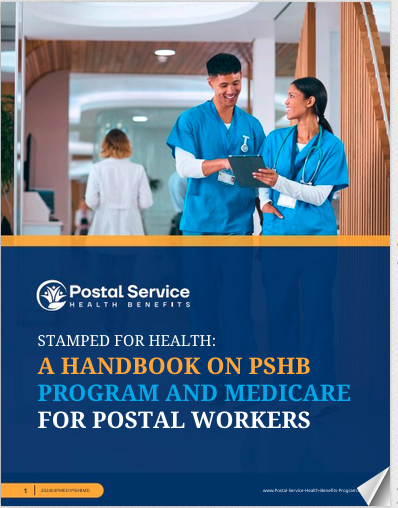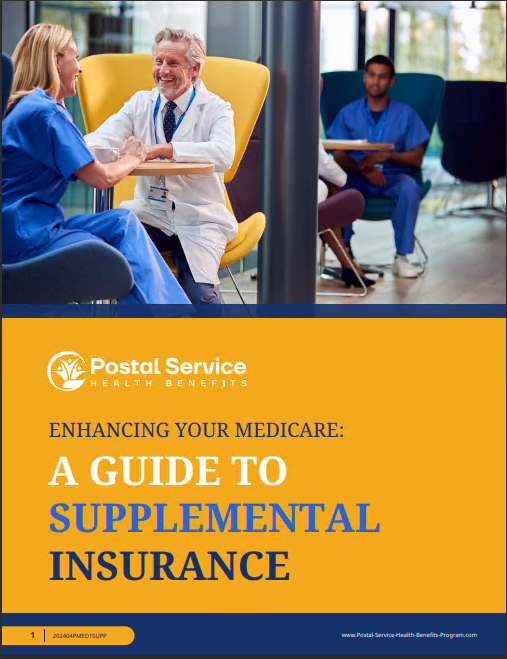Key Takeaways
-
The Postal Service Health Benefits (PSHB) program now replaces the Federal Employees Health Benefits (FEHB) for eligible USPS retirees and employees, with specific enrollment and integration rules.
-
Medicare-eligible retirees must understand how PSHB works alongside Medicare Part B to maximize benefits and minimize costs.
Understanding the Shift to PSHB
If you’re a Medicare-eligible Postal Service retiree, the transition to the Postal Service Health Benefits (PSHB) program in 2025 is a significant change that requires your attention. The PSHB program replaces the Federal Employees Health Benefits (FEHB) system for postal employees, retirees, and their eligible family members. With this shift, ensuring you understand the nuances of this program can help you make informed decisions about your healthcare coverage.
Who Is Affected by PSHB Changes?
The PSHB program applies to:
-
Current Postal Service employees
-
Eligible family members of Postal Service employees and retirees
If you retired before January 1, 2025, and are not enrolled in Medicare Part B, specific exemptions apply. For those retiring on or after this date, Medicare Part B enrollment is mandatory to maintain PSHB coverage.
Key Enrollment Periods
Enrollment is straightforward if you pay attention to the key timelines:
-
Open Season: From November 11 to December 13, 2024, you could select your PSHB plan. If you missed this window, changes are allowed only during Qualifying Life Events (QLEs).
-
Initial Enrollment for New Retirees: If you retire in 2025, you have a special period to enroll in PSHB, aligning with your Medicare Part B enrollment timeline.
Why Medicare Part B Matters
Medicare Part B becomes an essential component of your healthcare strategy with PSHB. Enrolling in Part B offers these benefits:
-
Cost Savings: Many PSHB plans waive deductibles and offer premium reimbursements for those enrolled in Medicare Part B.
-
Comprehensive Coverage: Part B covers outpatient services, doctor visits, and preventive care, which complements PSHB’s additional benefits.
If you’re eligible but don’t enroll in Medicare Part B, you could face penalties and higher out-of-pocket costs.
PSHB and Prescription Drug Coverage
One notable feature of the PSHB program is the integration of prescription drug benefits through a Medicare Part D Employer Group Waiver Plan (EGWP). Here’s what you need to know:
-
Automatic Enrollment: If you’re Medicare-eligible, your PSHB plan automatically provides Part D prescription drug coverage.
-
Cost Management: With the new $2,000 annual out-of-pocket cap under Medicare Part D, you’ll have better predictability in managing medication costs.
-
Coordination of Benefits: PSHB ensures that your prescription costs are coordinated with Medicare Part D for seamless coverage.
Understanding PSHB Costs
While specific private plan prices remain undisclosed, general cost considerations under PSHB include:
-
Premiums: Your monthly premiums depend on your selected PSHB plan.
-
Deductibles and Copayments: These costs vary based on your plan’s structure and whether you’re enrolled in Medicare.
-
Government Contribution: A significant portion of your premium is covered by the government, reducing your out-of-pocket expenses.
Benefits of Coordinating PSHB with Medicare
By coordinating PSHB with Medicare, you maximize your benefits and minimize potential gaps in coverage. Here’s how:
-
Enhanced Coverage: Medicare Part A and Part B work together with PSHB to provide inpatient, outpatient, and additional benefits.
-
Reduced Costs: Many PSHB plans offer lower copayments and cost-sharing when you’re enrolled in Medicare.
-
Streamlined Claims: Coordination ensures that claims are processed efficiently, reducing administrative burdens for you.
What to Do If You’re Not Enrolled in Medicare
If you’re not yet enrolled in Medicare but are eligible, here’s what to do:
-
Enroll During Your Initial Enrollment Period (IEP): This 7-month window surrounds your 65th birthday and includes 3 months before, the month of, and 3 months after your birthday.
-
Consider Special Enrollment Periods (SEP): If you’re still working or covered under a spouse’s plan, you may qualify for an SEP to avoid penalties.
-
Avoid Late Enrollment Penalties: Enrolling on time ensures you don’t face permanent premium increases for Medicare Part B.
Understanding Medicare Part A, B, and D Costs
Part A (Hospital Insurance):
-
Premiums: Free for most people with 40 quarters of work; otherwise, $518/month for fewer than 30 quarters or $284/month for 30-39 quarters.
-
Deductible: $1,676 per benefit period.
-
Coinsurance: $419/day for days 61-90 in the hospital.
Part B (Medical Insurance):
-
Standard Premium: $185/month in 2025.
-
Deductible: $257 annually.
-
IRMAA (Income-Related Monthly Adjustment Amount): Higher-income earners pay additional premiums.
Part D (Prescription Drug Coverage):
-
Deductible: Up to $590 annually.
-
Out-of-Pocket Cap: $2,000 annually, significantly lowering costs for high-cost medications.
Planning for Qualifying Life Events
Qualifying Life Events (QLEs) allow you to make changes to your PSHB enrollment outside the annual Open Season. Common QLEs include:
-
Marriage or divorce
-
Birth or adoption of a child
-
Loss of other health coverage
-
Significant changes in family income
Understanding these triggers ensures you can adapt your coverage to changing circumstances.
Tips for Reviewing and Selecting a PSHB Plan
Selecting the right PSHB plan can feel overwhelming, but these tips can help:
-
Assess Your Healthcare Needs: Consider your medical history, prescription drug requirements, and preferred healthcare providers.
-
Compare Plans: Use available tools to evaluate premiums, deductibles, and covered services.
-
Factor in Medicare Coordination: Ensure the plan you choose integrates smoothly with your Medicare benefits.
-
Review the Annual Notice of Change (ANOC): This document highlights any changes to your plan’s coverage, costs, or benefits for the upcoming year.
Frequently Asked Questions About PSHB
1. What happens if I don’t enroll in Medicare Part B?
You risk losing PSHB coverage or facing higher out-of-pocket costs if you’re Medicare-eligible but fail to enroll in Part B.
2. Can my family remain covered under PSHB?
Yes, eligible family members can maintain coverage as long as you meet the program’s requirements.
3. Are prescription drugs covered?
Yes, Medicare Part D prescription drug coverage is automatically included for Medicare-eligible members.
4. Can I change plans mid-year?
Only if you experience a QLE; otherwise, plan changes must wait until the next Open Season.
5. What should I do if I’m retiring in 2025?
Ensure you enroll in both Medicare Part B and a PSHB plan to avoid any coverage gaps.
Staying Informed About PSHB Changes
To stay ahead of any updates or changes to the PSHB program, consider:
-
Regularly Checking OPM Communications: Updates and important notices are issued through the Office of Personnel Management.
-
Attending Webinars or Briefings: These provide opportunities to ask questions and clarify doubts.
-
Consulting a Benefits Specialist: Professional guidance ensures you’re making the most of your options.
Key Takeaways for Navigating PSHB in 2025
As a Medicare-eligible Postal Service retiree, navigating the new PSHB program doesn’t have to be overwhelming. Understanding the integration of Medicare, managing enrollment periods, and staying informed about your plan’s benefits will help you secure the coverage that’s right for you. Make the most of the tools and resources available to ensure your healthcare needs are met seamlessly.







